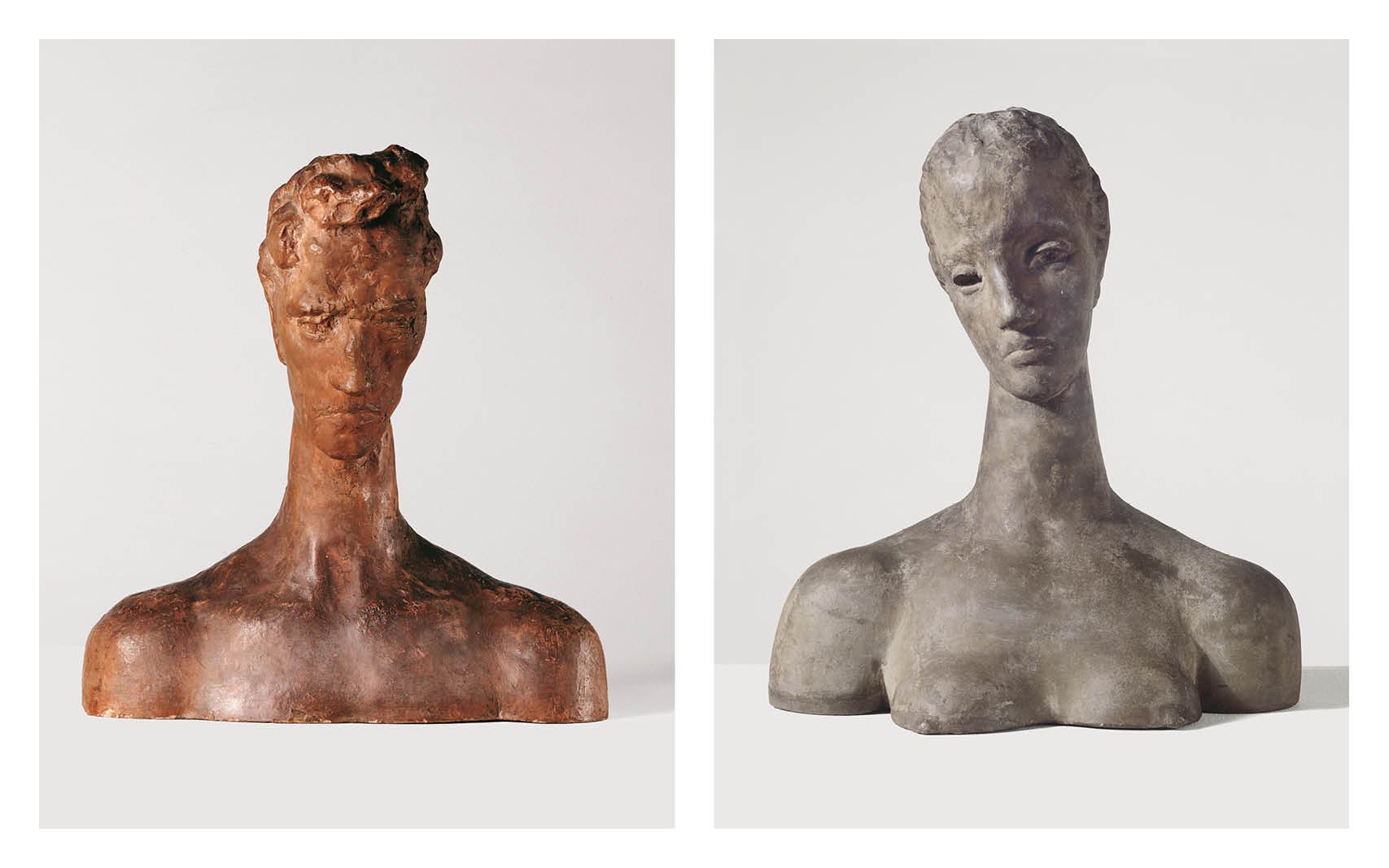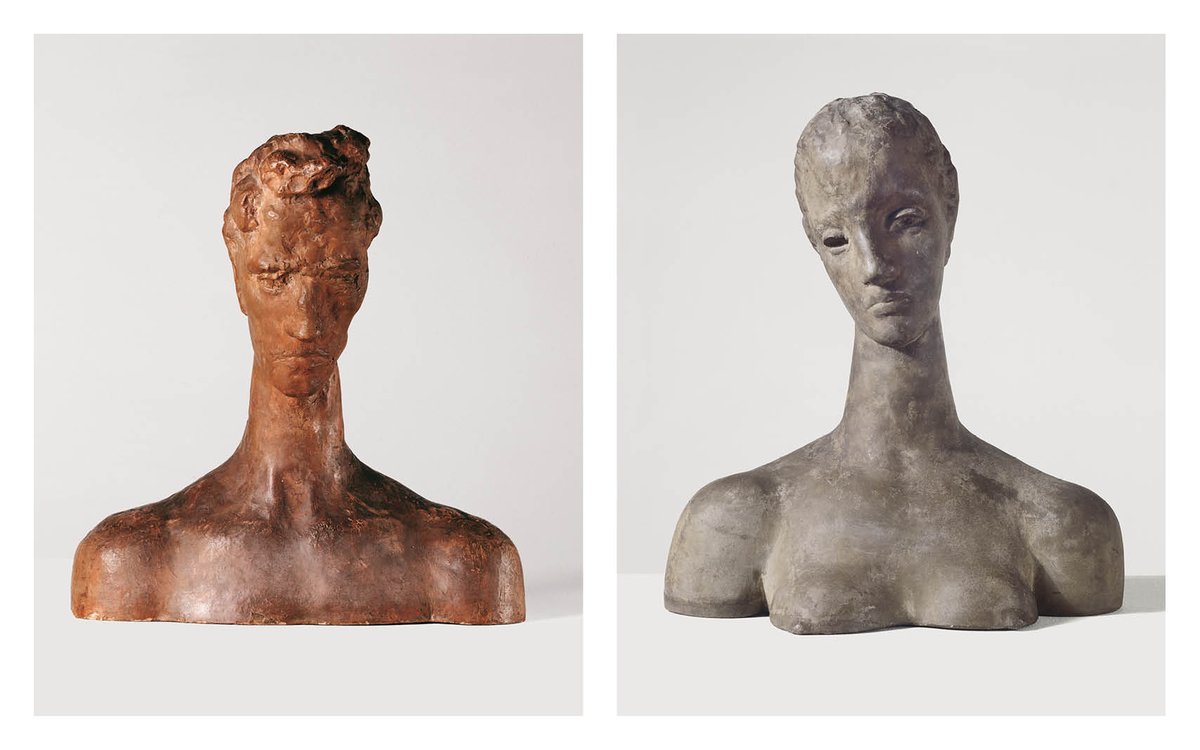Wilhelm Lehmbruck
Emporsteigender Jüngling, 1913–1914 / Grosse Sinnende, 1913

Wilhelm Lehmbruck
Bust of the Ascending Youth, 1913–1914
Kunst Museum Winterthur, Ankauf, 1968
Bust of the Woman in Deep Meditation, 1913
Kunst Museum Winterthur, Ankauf mit Mitteln aus dem Fonds für gemeinnützige Zwecke des Kantons Zürich, 1996
Fotos: SIK-ISEA, Zürich (Lutz Hartmann)
At the beginning of the 20th-century Paris wasn’t only the city of leading painters but also the city of great sculptors. Rodin, Maillol, Medardo Rosso.
Wilhelm Lehmbruck came to Paris from Rhineland in 1910. Here, up until the outbreak of the First World War, he created his most significant works, including the large figures, Bust of the Ascending Youth and Bust of the Woman in Deep Meditation. They are part versions, showing only the head and upper body. These busts concentrate purely on expression; the extreme elongation of neck and head in these becomes more apparent. The busts intensify the temperament of the figure.
The head of the adolescent is tilted forwards. The chapped neck is reminiscent of Rodin’s Pierre de Wissant. The youth is placed opposite the smooth, finely worked form of the girl’s head. Here, the head is slightly tilted in relation to the neck and upper body. The upper body is as if constructed in an architectural nature: shoulders and breasts are dome-like forms.
The two figures are not bronzes; they are cast in reconstituted stone. The red-brown or grey-green colouring of the material characterises their appearance. The adolescent and the girl are interactive, but they are neither a pair, nor do they stand in contrast to one another. They display two characteristic attitudes: he appears to be aspiring and determined while she is self-absorbed. Lehmbruck shows the two figures as individuals. They are independent and yet attract one another. Their cerebral dimension however is mutual: introversion.

Wilhelm Lehmbruck
Bust of the Ascending Youth, 1913–1914
Kunst Museum Winterthur, Ankauf, 1968
Bust of the Woman in Deep Meditation, 1913
Kunst Museum Winterthur, Ankauf mit Mitteln aus dem Fonds für gemeinnützige Zwecke des Kantons Zürich, 1996
Fotos: SIK-ISEA, Zürich (Lutz Hartmann)


